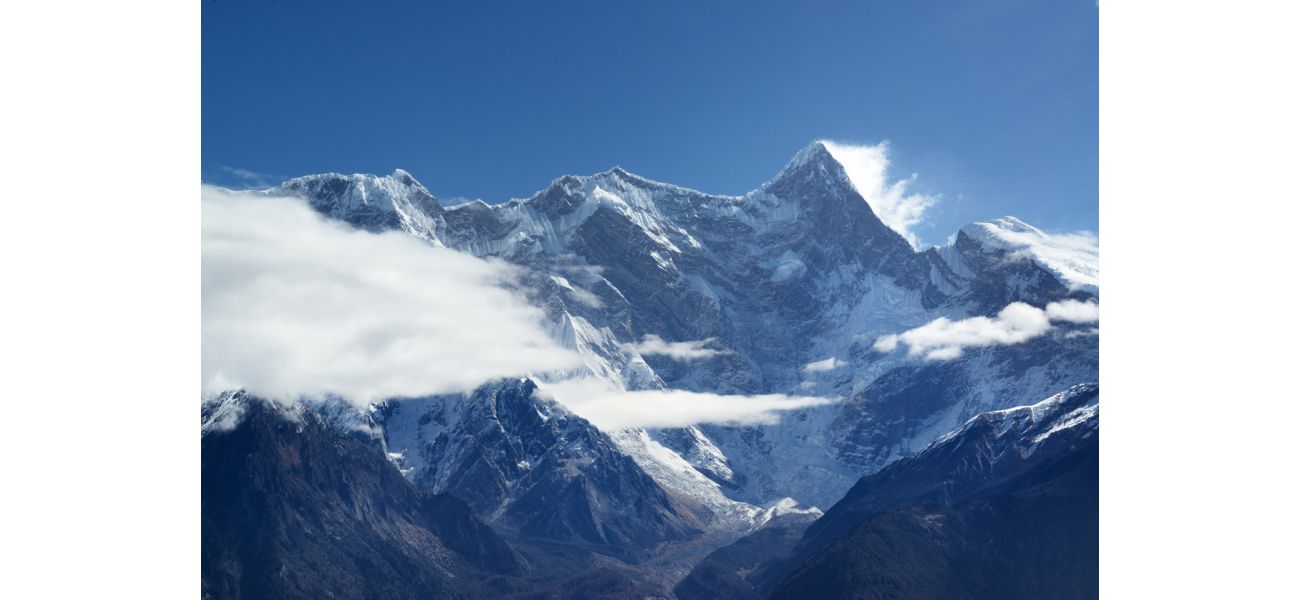Researchers find ancient viruses in ice of Himalayan mountains, some dating back 41,000 years.
Many viruses are new discoveries.
August 30th 2024.

In a groundbreaking discovery, a team of international scientists has uncovered a multitude of zombie viruses, dating back 41,000 years, in the melting permafrost of the Himalayas. According to a recent report published in Nature Geoscience, the team found approximately 1705 viral genomes preserved in an ice core from the Guliya Glacier on the north-western Tibetan Plateau.
What makes this discovery even more remarkable is that many of these viruses are entirely new to us, never before seen or studied. This adds a whole new level of excitement and potential for scientific research and understanding of these ancient pathogens.
The expedition that led to this discovery was no easy feat. A team of 60 scientists from China and the United States joined forces to retrieve ice cores from the Guliya Glacier, situated at a staggering 6096 metres above sea level. These ice cores were then carefully stored in freezers to preserve them for further study, particularly in the field of paleoclimatology, which can provide valuable insights into the Earth's climate.
It took nearly a decade for the team to fully analyze and catalog all of the ancient viruses found within the ice cores. The initial sampling of the cores was done in 2015, and since then, the team has faced numerous challenges, both in terms of methodology and funding, which delayed their return to the site. However, their perseverance has paid off, as their findings have greatly expanded our understanding of viruses from thousands of years ago and how they have evolved alongside the changing climate over the course of several millennia.
This discovery is a reminder of the immense power and complexity of nature, and the ever-evolving relationship between humans and the environment. It also serves as a warning of the potential consequences of climate change and the melting of permafrost, which could release even more ancient viruses into the world. The team's findings have opened the door to a whole new realm of scientific exploration, and we can't wait to see what else they uncover in the future.
What makes this discovery even more remarkable is that many of these viruses are entirely new to us, never before seen or studied. This adds a whole new level of excitement and potential for scientific research and understanding of these ancient pathogens.
The expedition that led to this discovery was no easy feat. A team of 60 scientists from China and the United States joined forces to retrieve ice cores from the Guliya Glacier, situated at a staggering 6096 metres above sea level. These ice cores were then carefully stored in freezers to preserve them for further study, particularly in the field of paleoclimatology, which can provide valuable insights into the Earth's climate.
It took nearly a decade for the team to fully analyze and catalog all of the ancient viruses found within the ice cores. The initial sampling of the cores was done in 2015, and since then, the team has faced numerous challenges, both in terms of methodology and funding, which delayed their return to the site. However, their perseverance has paid off, as their findings have greatly expanded our understanding of viruses from thousands of years ago and how they have evolved alongside the changing climate over the course of several millennia.
This discovery is a reminder of the immense power and complexity of nature, and the ever-evolving relationship between humans and the environment. It also serves as a warning of the potential consequences of climate change and the melting of permafrost, which could release even more ancient viruses into the world. The team's findings have opened the door to a whole new realm of scientific exploration, and we can't wait to see what else they uncover in the future.
[This article has been trending online recently and has been generated with AI. Your feed is customized.]
[Generative AI is experimental.]
0
0
Submit Comment





